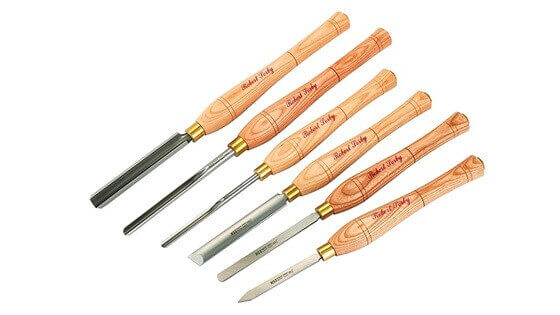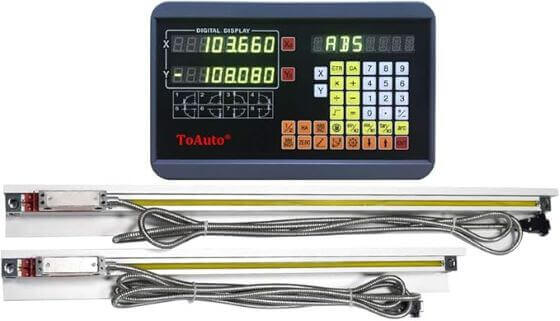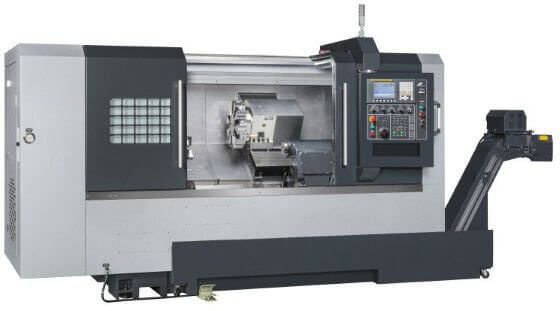Woodturning is a rewarding craft, allowing you to shape beautiful objects from raw timber. However, creating multiple, perfectly identical pieces by hand – think matching table legs, a set of chair spindles, or consistent balusters – can be incredibly challenging and time-consuming, even for experienced turners. This is where a specialized accessory comes into play: the wood lathe duplicator.
But what exactly is a wood lathe duplicator, and how does it achieve this feat of replication? If you’re involved in production turning or simply need to create precise duplicates, understanding this tool is essential. This guide will explain what a lathe duplicator is, how it functions, the different types available, its pros and cons, and help you decide if it’s a worthwhile addition to your workshop.

How Does a Wood Lathe Duplicator Work? The Basic Principle
A wood lathe duplicator, sometimes called a copy lathe attachment or lathe copier, is essentially a mechanical guide system that allows you to accurately replicate the profile of an existing object or a flat template onto a new workpiece mounted in your lathe.
The core mechanism typically involves these key components working together:
- Template/Pattern Holder: A mounting point, usually running parallel to the lathe bed, where you securely place either the original piece you want to copy or a precisely cut flat template (often made of wood, MDF, or metal) representing the desired profile.
- Stylus (or Follower): A pin or bearing-tipped probe that physically traces along the contours of the template or original pattern.
- Cutting Tool: This is linked mechanically to the stylus. It’s often a specialized carbide cutter, a standard High-Speed Steel (HSS) tool bit held in a specific holder, or even a router bit (in router-based duplicators).
- Carriage/Mounting System: The framework that holds the stylus and cutter assembly and allows it to slide along the lathe bed, parallel to the workpiece. This system also provides movement towards and away from the workpiece (in/out).
The Process: As the operator moves the duplicator’s carriage along the lathe bed, the stylus follows the shape of the template. Because the cutting tool is linked to the stylus, any inward or outward movement of the stylus (as it traces the template’s curves and details) is precisely mirrored by the cutting tool, which then cuts the identical profile into the rotating workpiece.
Types of Wood Lathe Duplicators
While the principle is similar, duplicators come in a few variations:
Manual Follower Duplicators:
This is the most common type found in home workshops and small professional settings. The operator manually controls the longitudinal feed (moving the carriage along the bed) and sometimes the cross-feed engagement, while ensuring the stylus maintains contact with the template. The cutter is often a replaceable carbide bit or a standard HSS tool. They offer a good balance of cost and capability.
Router-Based Duplicators:
Instead of a traditional lathe cutter, these systems use a mounted router (often a trim router) with a specific profile bit (like a V-groove or round-nose bit) as the cutting head. The router follows a stylus/template setup. These can sometimes create sharper details or different types of cuts compared to single-point cutters but may require careful setup and specific router bits.
Hydraulic/Powered Duplicators:
More common in industrial settings, these use hydraulic systems to control the cutter’s movement based on the stylus, providing a smoother, powered feed and potentially higher accuracy for large production runs. They are significantly more expensive.
Full Copy Lathes:
These are not attachments but dedicated machines with the duplication mechanism fully integrated. They are typically large, industrial machines designed for high-volume production.
Pros of Using a Wood Lathe Duplicator
Adding a duplicator to your workflow offers several key advantages:
- Consistency & Accuracy: Produces multiple pieces that are virtually identical, far exceeding the consistency achievable by freehand turning.
- Speed & Efficiency: Dramatically reduces the time needed to produce sets of identical items compared to measuring and turning each piece individually.
- Reduced Skill Barrier (for Replication): Allows turners with less freehand experience to accurately replicate complex profiles from a template. (Note: Basic safe lathe operation skills are still essential).
- Ideal for Production: Perfect for furniture makers, craft businesses, or anyone needing batches of matching turned components like legs, spindles, balusters, or handles.
Cons & Limitations of Wood Lathe Duplicators
Duplicators are powerful tools, but they also have drawbacks:
- Setup Time: Mounting the duplicator, securing the template accurately, and setting the cutter depth and alignment can be time-consuming initially.
- Template Requirement: You need an accurate original piece or a precisely made template to copy. Creating good templates requires skill and time itself.
- Finish Quality: The duplicated piece often requires more sanding than a skillfully freehand-turned piece. The surface finish depends heavily on the cutter sharpness, wood type, and feed rate.
- Cost: A good quality duplicator attachment represents an additional investment for your workshop.
- Limited Creativity (During Duplication): The process is about replication, not spontaneous design changes on the workpiece itself.
- Primarily for Spindle Work: Most duplicators are designed for turning between centers (spindle work) and are not suitable for faceplate work like bowls or platters.
- Lathe Compatibility: Not all duplicators fit all lathes. You must ensure the model you choose is compatible with your lathe’s bed design, swing capacity, and overall size.
Who Needs a Wood Lathe Duplicator?
A duplicator isn’t necessary for every woodturner, but it’s highly beneficial for:
- Production Turners: Anyone making multiples of the same item for sale (furniture parts, craft items).
- Furniture Makers & Restorers: Essential for creating matching sets of legs, spindles, or replicating damaged historical components.
- Hobbyists Making Sets: Useful for projects requiring identical parts, like chess sets, tool handle sets, or matching spindles for a project.
- Those Requiring High Repeatability: When slight variations between pieces are unacceptable.
Choosing a Wood Lathe Duplicator
Consider these factors when selecting a duplicator:
- Lathe Compatibility: Check manufacturer specifications for compatibility with your lathe model.
- Project Types: What size and complexity of items will you be duplicating?
- Build Quality & Rigidity: A more rigid duplicator will generally produce more accurate results with less vibration.
- Cutter Type: Decide between standard tool bits, specialized carbide cutters, or a router-based system based on your needs and preferences.
- Budget: Prices vary significantly based on brand, build quality, and features.
The Importance of a Solid Lathe Foundation
A wood lathe duplicator relies heavily on the machine it’s mounted to. No matter how good the duplicator, its accuracy and the quality of the finish will be compromised if used on a flimsy, underpowered, or vibrating lathe. Features like a heavy cast iron bed, sufficient motor power, smooth bearings, and overall rigidity become even more critical when adding the forces involved in duplication.
Choosing the right duplicator goes hand-in-hand with having a capable machine. If you’re exploring options for the lathe itself, ensuring you have a stable and reliable platform is paramount for precise duplication work. For guidance on selecting a robust base machine, be sure to check out our comprehensive guide to the Best Wood Lathes of 2025, where we review top-performing options suitable for supporting accessories like duplicators.
Conclusion: A Tool for Replication and Efficiency
So, what is a wood lathe duplicator? It’s a valuable attachment that transforms your lathe into a replication machine, enabling the fast, accurate, and consistent production of identical spindle-turned items. While it requires careful setup and doesn’t replace freehand turning skills for unique pieces, it’s an indispensable tool for anyone involved in production work or projects demanding high repeatability. If you frequently need to make multiples, a lathe duplicator can save significant time and effort, making it a powerful addition to the woodturner’s toolkit.
Check some useful links:
- https://www.youtube.com/watch?v=pM39W9hVa-U
- https://www.youtube.com/watch?v=EchCqvRSIOU
- https://www.instructables.com/Wood-Lathe-Duplicator-With-Angle-Grinder/
- Products on Amazon




